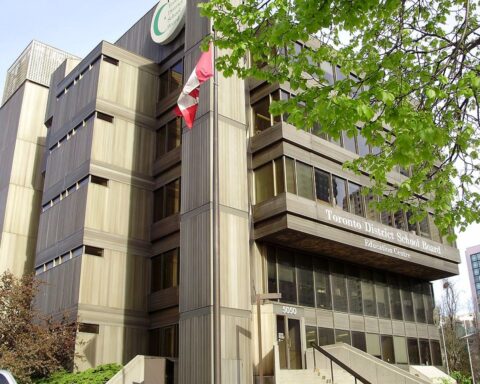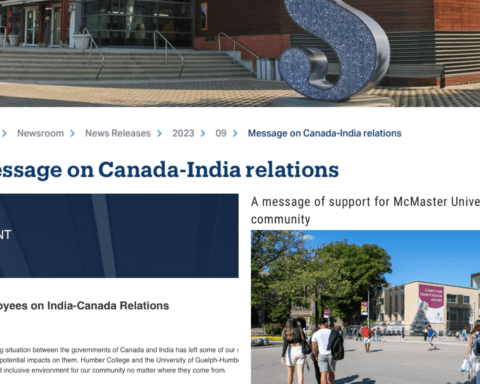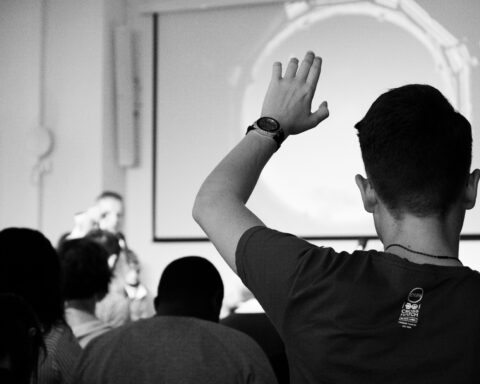India and Canada — both models of successful pluralistic societies where diverse cultural, linguistic and religious communities live together peacefully — can still learn from each other, according to leading intellectuals, professors Rajeev Bhargava and Charles Taylor.
Prof. Bhargava is affiliated to the Centre for the Study of Developing Societies, New Delhi, while Prof. Taylor is Professor Emeritus, McGill University. Prof. Taylor is better known for co-chairing the Bouchard-Taylor Commission on reasonable accommodation (2008) in Quebec. The exchange took place at the ‘India and Canada: Pathways to Pluralism’ forum hosted by the Global Centre for Pluralism in Ottawa.
In response to a question from moderator Prof. Jane Jenson (Université de Montréal) about what lessons each country can learn from the other, Bhargava noted that the Indian model of secularism is not anti-religious and that it is important to recognize that three-quarters of the world’s population has some kind of religious affiliation. It is not advisable to try to eradicate differences, he added.
Taylor agreed that secularism needs to be redefined in Canada, and that laicité, the Quebec notion of secularism, arose in a particular social and historical context, but it has to be worked out in today’s situation with the influx of immigrants from non- European countries. It should not be carved in stone according to tenets set out by philosophers from past ages such as John Stuart Mill and Karl Marx, he said.
“There’s an important lesson that India can learn from Canada, and that’s respect for rule of law and human rights,” said Bhargava, adding with a laugh that this is something that Taylor should have claimed for Canada.
“It’s a very unusual comparison between Canada and India, given their vastly different histories and contexts, but a very appropriate one for the Global Centre for Pluralism to undertake,” said Jenson in her introduction. “Both are institutional liberal democracies and both have experiences of ‘deep’ democracy.”
“A new situation can threaten the most wonderfully diverse society…The recent debate in Quebec is an example. A society was united by laicité (secularism) but a religious head dress became a threat to that.”
Using a question-and-answer format, she asked the two speakers to describe the foundations for the success of pluralism in their respective countries.
Historical tradition
Bhargava explained that India has a long, historical tradition going back several millennia (since the Hindu religion is that old), of accepting that one can believe in one God, or many gods or no god at all.
Although there are other religious communities in the subcontinent, such as Muslims, Sikhs, and Christians, all of them have accepted and adopted some form of this polytheistic worldview.
He continued that the lack of a centralized authority, especially in Hinduism and also in Islam, is another factor that contributed to pluralism.
“There’s an important lesson that India can learn from Canada, and that’s respect for rule of law and human rights,”
A tradition that religion never legitimated political rule was another underpinning element for the success of diversity, according to Bhargava. Finally, modern India’s constitution built on these traditions and made institutional arrangements that are conducive to pluralism, he said.
“Although there has been a massive assault on these traditions in 21st century India, these democratic institutions will ensure that India remains a successful pluralist society,” he said.
Canadian experience
Giving a brief, historical analysis to account for the success of pluralism in Canada, Taylor said; “We lucked into our present situation. Diversity in Canada has three dimensions, the Aboriginals, the French-English population and immigrants from source countries other than France and Britain. Things could have gone very wrong, but they didn’t.”
He pointed out that between the French and the English there was a religious as well as linguistic divide. He explained that constitutional arrangements had to be made that accommodated the interests of both imperialistic powers, so for example, no one religion was made the state religion, and both languages were made official.
“It was in the 1960’s that we started to celebrate multiculturalism and stopped viewing it as a threat,” he said.
Despite some “shameful episodes” such as the internment of Japanese-Canadian citizens during World War II, Canada has been successful in building a pluralistic society, he concluded.
Asked about the ‘fragilities’ or what could possibly threaten pluralism, Taylor replied that the main vulnerability comes from the nature of democracy itself.
“A new situation can threaten the most wonderfully diverse society,” he said, explaining that sometimes societies are united by ethnicity and at other times by a certain political ethic, and this can sometimes lead to exclusion of minorities. “The recent debate in Quebec is an example. A society was united by laicité (secularism) but a religious head dress became a threat to that.”
Religion as community
Bhargava responded that religion as a bounded community with a fixed set of doctrines originated in 16th and 17th century Europe has now become globalized and is a source of conflict. “Rigidly formed, well demarcated religious communities become aligned with nationalism and create ethno-religious monoliths,” he said.
However, he expressed confidence that given India’s constitutional arrangements protecting individual rights and India’s ancient tradition of balancing rather than prioritizing values will keep this majoritarianism at bay. “Threats, challenges and failures come when one value is made paramount,’ he said.
“It was in the 1960’s that we [Canada] started to celebrate multiculturalism and stopped viewing it as a threat,”
Both Bhargava and Taylor said that safeguarding pluralism is the responsibility of all sectors of the body politic — intellectuals, political parties and leaders, civil society, the media and an alert, watchful citizenry. Both emphasized the role of a free and independent media, but noted that both countries displayed certain disturbing trends such as the concentration of media ownership in a few hands.
In response to a question from the audience, Bhargava commented: “ Prime Minister [Narendra] Modi (of India) belongs to a political party that has a history of exclusionist policies.” But he reiterated his confidence in “the compulsions of power” and in Indian democracy which he said “will tame anyone.” However, he cautioned that it is too early to predict.
Taylor noted a similar trend in Canada where the current federal government is less sensitive to the Aboriginal dimension.
Ottawa-based writer/journalist, editor, blogger, communications professional seeking freelance opportunities in political and travel writing.





